Learn more about Costa Rica
Progress
- Strengthened Identification and Monitoring: Efforts were made to strengthen coordination among institutions and sectors involved in addressing child labour. Guidelines were developed for detecting and referring suspected child labour cases in various sectors, including agriculture. Focal points were designated at regional and local levels to address and refer underage workers.
- Intersectoral Information Management System: Progress was made in assessing the feasibility of implementing an intersectoral information management system. Evaluation was conducted to incorporate child labour indicators into existing national information systems. Coordination between different departments within the Ministry of labour and Social Security was improved to enhance information systems.
- Combatting Hidden Child Labour in Value Chains: Measures were taken to combat child labour within value chains. Clauses prohibiting child labour were incorporated into procurement and subcontracting instruments in the agricultural sector. An annual survey on child labour was developed for all productive sectors. A rrecognition system for good practices in preventing child labour was established in the business sector.
- Protection of Child Migrants: Migration officers received training on protocols for attending to underage individuals and considering the best interests of the child in human mobility. Joint operations were conducted by relevant ministries and agencies to protect child and adolescent workers in sectors with high labour demand.
- Participation of Children and Adolescents: Dialogue spaces were promoted, led by the National Board for Children, allowing child and adolescent workers to contribute to monitoring and evaluating public policies related to child labour.
- Technical-Vocational Training: Regional training and professional development opportunities were promoted for adolescents aged 15 to 18 who were in the process of withdrawing from child labour, facilitating their reintegration into the education system.
- Promotion and Awareness-raising: Various public institutions and workers' organizations carried out awareness-raising and training activities on child labour. Technical support was provided by the Office of Attention and Eradication of Child labour and Protection of the Adolescent Worker (OATIA). Messages on child labour and the prevention of commercial sexual exploitation were disseminated.
- Monitoring and Evaluation: The Ministry of labour and Social Security, through OATIA, took the lead in the accountability process, compiling information and producing monitoring and follow-up reports on the commitments outlined in the roadmap.
- Normative Updating and Social Dialogue: Progress was made in the revision and updating of the Children and Adolescents’ Code through the Special Commission on Youth, Childhood, and Adolescence in the Legislative Assembly. Technical reviews were conducted to strengthen special protection regulations.
International Instruments
| Area | Ilo Instrument | Status | Ratification date | CEACR comments |
|---|---|---|---|---|
| Child Labour | C138 Ratification of C138 - Minimum Age Convention (1973) |
In Force | 11 Jun 1976 | |
| Child Labour, Forced Labour, Human Trafficking, Modern Slavery | C182 Worst Forms of Child Labour Convention (1999) |
In Force | 10 Sep 2001 | |
| Child Labour, Modern Slavery | C029 Forced Labour Convention (1930) |
In Force | 02 Jun 1960 | |
| Forced Labour, Human Trafficking, Modern Slavery | P029 Protocol of 2014 to the Forced Labour Convention (1930) |
In Force | 16 Nov 2020 | |
| Forced Labour, Modern Slavery | C105 Abolition of Forced Labour Convention (1957) |
In Force | 04 May 1959 | |
| Child Labour, Forced Labour, Human Trafficking, Modern Slavery | C143 Migrant Workers (Supplementary Provisions) Convention (1975) |
|||
| Child Labour, Forced Labour, Human Trafficking, Modern Slavery | C181 Private Employment Agencies Convention (1997) |
|||
| Freedom of Association | C087 Freedom of Association and Protection of the Right to Organise Convention (1948) |
In Force | 02 Jun 1960 | |
| Freedom of Association | C098 Right to Organise and Collective Bargaining Convention (1949) |
In Force | 02 Jun 1960 | |
| Discrimination | C100 Equal Remuneration Convention (1951) |
In Force | 02 Jun 1960 | |
| Discrimination | C111 Discrimination (Employment and Occupation) Convention (1958) |
In Force | 01 Mar 1962 | |
| Occupational Safety and Health | C155 Occupational Safety and Health Convention (1981) |
|||
| Occupational Safety and Health | C187 Promotional Framework for Occupational Safety and Health Convention (2006) |
| Area | UN Treaty | Signature date | Ratification date | Status |
|---|---|---|---|---|
| Child Labour | IV-11 Convention on the Rights of the Child (1989) |
26 Jan 1990 | 21 Aug 1990 | |
| Child Labour | IV-11-c Optional Protocol to the Convention on the Rights of the Child on the sale of children, child prostitution and child pornography (2000) |
7 Sep 2000 | 9 Apr 2002 | |
| Forced Labour, Human Trafficking | PALERMO_PROTOCOL Protocol to Prevent, Suppress and Punish Trafficking in Persons, especially Women and Children, supplementing the United Nations Convention against Transnational Organized Crime (2000) |
16 Mar 2001 | 9 Sep 2003 | |
| Human Trafficking, Modern Slavery | XVIII-4 Ratification of the Supplementary Convention on the Abolition and of Slavery, the Slave Trade and Institutions and Practices Similar to Slavery (1956) |
- | - |
Sources: ILO Normlex & UN Treaty Collection
RESOURCES
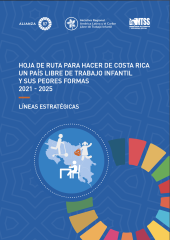
Hoja de Ruta - Costa Rica
Document
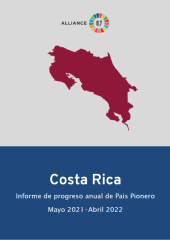
Costa Rica Informe de progreso anual de Pais Pionero, 2021-2022
Document
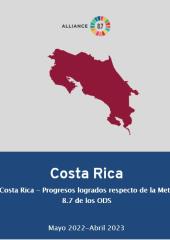
Costa Rica Informe de progreso anual de Pais Pionero, 2022-2023
Document
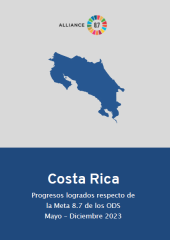
Costa Rica Informe de progreso anual de Pais Pionero, Mayo 2023 - Diciembre 2023
Document
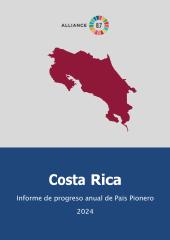
Costa Rica Informe de progreso anual de País Pionero, 2024
Document